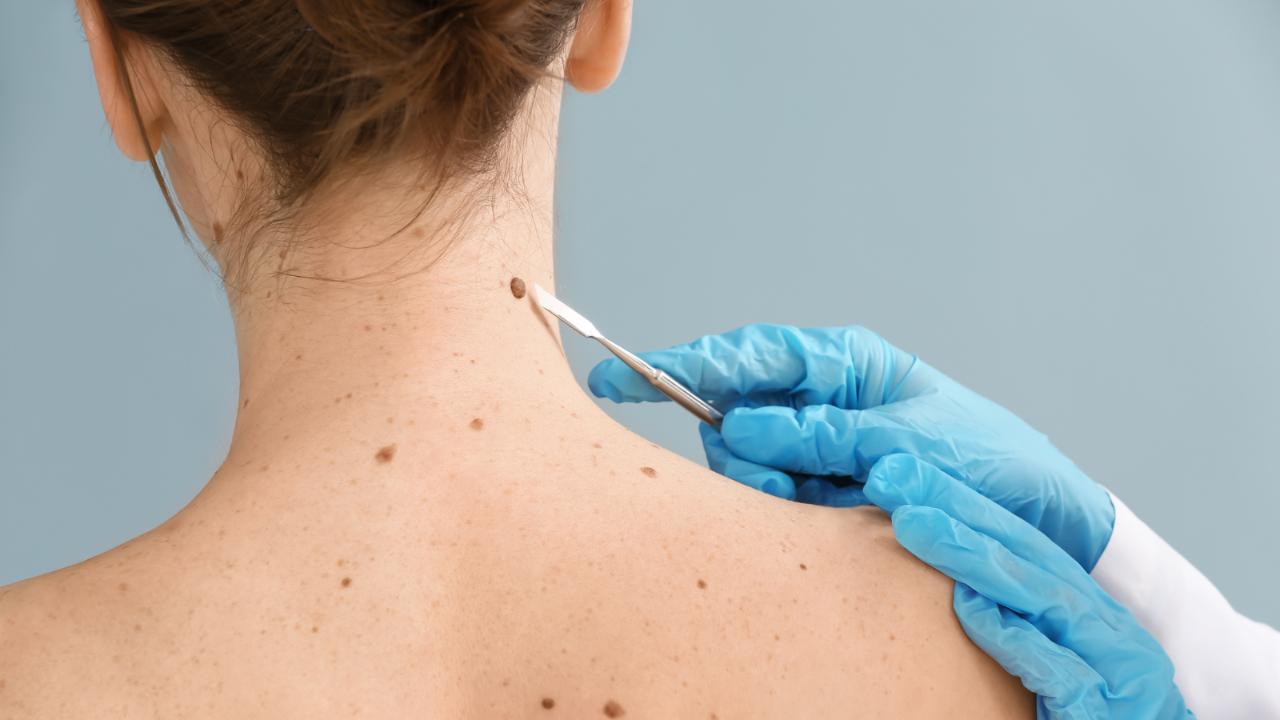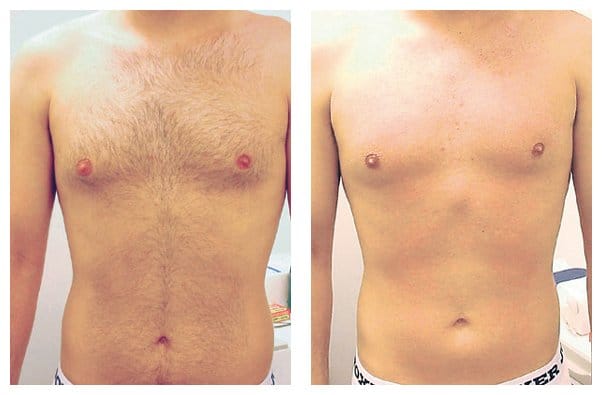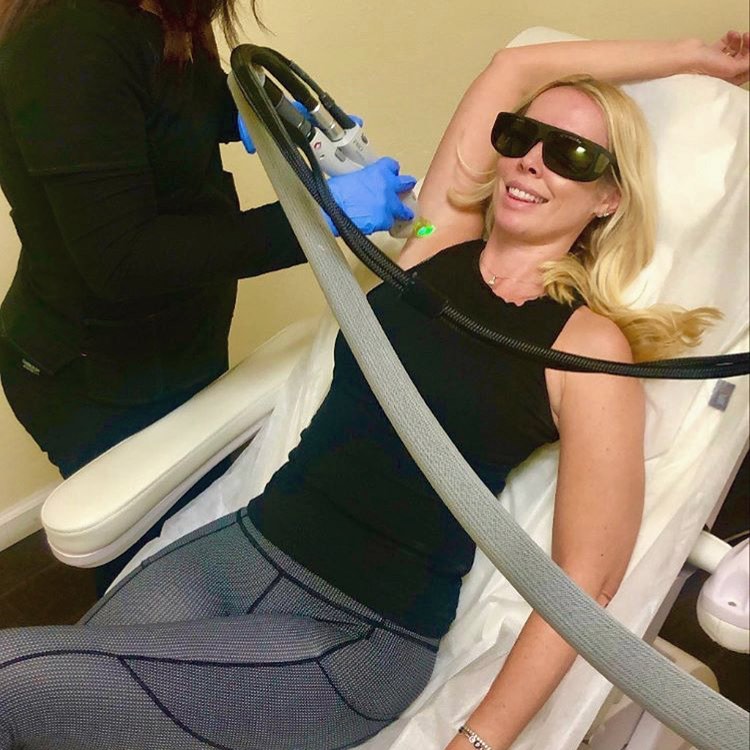Unveil Radiant Skin: Our Proven Methods For Safe And Painless Tag Removal offers you an exclusive opportunity to achieve flawless skin effortlessly. At Spoiled Laser, we specialize in providing top-notch beauty transformations using advanced techniques and cutting-edge technology. Our team of experts has developed proven methods for the safe and painless removal of skin tags, ensuring the utmost care and satisfaction for our clients. With a wide range of premium services, including laser hair removal, skin bleaching, facial treatments, and body contouring, Spoiled Laser is your ultimate destination for unveiling radiant skin. Trust our expertise and experience to enhance your beauty and confidence today.
Understanding Skin Tags
Skin tags, medically known as acrochordons, are benign growths that commonly appear on the skin. They are often small, flesh-colored or slightly darker, and have a soft, smooth texture. Skin tags are typically attached to the skin by a thin stalk or peduncle, and can vary in size from a few millimeters to a few centimeters. While they are usually harmless, skin tags can be a source of cosmetic concern or irritation, prompting individuals to seek their removal.
What are skin tags?
Skin tags are small, noncancerous growths that typically occur in areas where the skin folds or rubs against itself, such as the neck, armpits, groin, and under the breasts. They are composed of collagen fibers and blood vessels surrounded by a layer of normal skin. Skin tags are harmless and do not usually cause any symptoms, although they can occasionally become irritated or bleed if they are subjected to friction or trauma.
Causes of skin tags
The exact cause of skin tags is not fully understood, but they are believed to develop due to a combination of genetic factors, hormonal changes, and friction or irritation of the skin. Certain individuals may be more prone to developing skin tags, such as those who are overweight, pregnant, or have a family history of skin tags. Additionally, skin tags tend to occur more frequently with age, as the skin becomes looser and more prone to friction.
Characteristics of skin tags
Skin tags are generally characterized by their appearance and texture. They often have a narrow base or stalk that attaches them to the skin, giving them a hanging or pendulous appearance. The surface of a skin tag is usually smooth and either the same color as the surrounding skin or slightly darker. Skin tags are usually painless, but they can occasionally become irritated or cause discomfort if they are rubbed against clothing or jewelry.
The Importance of Safe and Painless Tag Removal
When considering the removal of skin tags, it is essential to prioritize safety and minimize pain and discomfort. Although skin tags are benign growths, improper removal methods or self-removal attempts can lead to complications and undesirable outcomes.
Avoiding complications
Attempting to remove skin tags without professional guidance can increase the risk of complications such as infection, scarring, and excessive bleeding. It is crucial to avoid cutting or tearing off skin tags, as this can cause bleeding and increase the risk of infection. Professional removal methods ensure that the tag is removed safely and with minimal risk of complications, promoting optimal healing and cosmetic results.
Minimizing pain and discomfort
Removing skin tags can cause minimal discomfort or pain, but this can be managed effectively with appropriate techniques and anesthetics. Professional removal methods prioritize the comfort of the individual and utilize local anesthesia to numb the area being treated. This helps minimize any potential pain or discomfort associated with the removal procedure, ensuring a more pleasant experience for the individual.
Consulting a Professional
Given the potential risks and complications associated with skin tag removal, it is highly recommended to seek professional help for safe and effective removal. Dermatologists and estheticians with experience in tag removal procedures are skilled in assessing the size, location, and characteristics of skin tags, as well as determining the most suitable removal method.
Why professional help is recommended
Professional help is recommended for skin tag removal due to several reasons. Firstly, a trained professional can accurately diagnose skin tags and differentiate them from other skin conditions that may require different treatments. Additionally, professionals have the necessary knowledge and expertise to perform removal procedures safely and effectively, minimizing the risk of complications. They can also provide valuable advice and guidance on aftercare to promote optimal healing and minimize the chances of recurrence.
Finding a reputable dermatologist or esthetician
When seeking professional help for skin tag removal, it is important to find a reputable dermatologist or esthetician who specializes in this procedure. A reputable professional will have the necessary qualifications, certifications, and experience to ensure safe and effective removal. Recommendations from friends, family, or healthcare providers can be helpful in finding a reliable practitioner. Additionally, online reviews and testimonials can provide insights into the experiences of previous clients.
Non-Invasive Removal Methods
Various non-invasive methods can be employed to remove skin tags safely and efficiently. These methods are generally quick, minimally painful, and do not require any downtime. The choice of removal method depends on factors such as the size, location, and number of skin tags.
Cryotherapy
Cryotherapy involves freezing the skin tag using a cold substance, typically liquid nitrogen, to destroy the cells within the tag. The freezing causes the tag to die and eventually fall off. Cryotherapy is relatively quick, with treatment sessions typically lasting only a few minutes. It may cause a mild stinging or burning sensation during the procedure but is usually well-tolerated by individuals. Multiple sessions may be required for complete tag removal.
Electrocautery
Electrocautery is a method of skin tag removal that uses an electrical current to burn off the tag. The electrical current cauterizes the blood vessels within the tag, preventing bleeding. Local anesthesia is used to numb the area before the procedure, ensuring minimal discomfort. After electrocautery, the tag may scab or blister but will eventually fall off, leaving behind a small, healing wound. Proper aftercare is essential to promote healing and minimize the risk of infection.
Ligation
Ligation involves tying off the base of the skin tag using a thread or dental floss, cutting off its blood supply. Without a blood supply, the tag will eventually die and fall off. This method may take longer compared to other removal methods, as it requires time for the tag to wither and detach. Ligation typically causes minimal discomfort and is well-tolerated by individuals. It is important to follow proper hygiene practices during and after ligation to minimize the risk of infection.
Excision
Excision involves using a scalpel or surgical scissors to remove the skin tag. Local anesthesia is administered to numb the area, ensuring a painless procedure. Excision is often recommended for larger skin tags or tags that have a thicker stalk. After excision, the wound is typically closed with sutures, which may be absorbable or require removal after a few days. Proper wound care and aftercare instructions should be followed to promote optimal healing and reduce the risk of infection.
At-Home Remedies for Tag Removal
While seeking professional help is the recommended approach for safe and effective removal of skin tags, some individuals may prefer to try at-home remedies. It is important to note that these remedies are not supported by scientific evidence, and their effectiveness may vary depending on the individual.
Tea tree oil
Tea tree oil has been used as a natural remedy for various skin conditions, including skin tags. It is believed to have antiviral and antifungal properties that may contribute to tag removal. To use tea tree oil, apply a few drops directly to the skin tag and cover it with a bandage or cotton ball. Repeat this process daily until the tag falls off. It is essential to discontinue use if any skin irritation occurs.
Apple cider vinegar
Apple cider vinegar is another popular home remedy for tag removal. It is thought to work by causing the tag to dry out and eventually fall off. To use apple cider vinegar, soak a cotton ball in the vinegar and apply it directly to the skin tag. Secure it with a bandage and leave it on overnight. Repeat this process daily until the tag disappears. It is important to monitor for any skin irritation and discontinue use if necessary.
Duct tape method
The duct tape method involves covering the skin tag with duct tape and leaving it in place for a prolonged period, typically several days. This method is believed to work by cutting off the tag’s blood supply, causing it to wither and detach. After removing the duct tape, the tag may fall off on its own. However, this method may not be suitable for all individuals, and there is limited scientific evidence to support its effectiveness.
Preparation and Aftercare
Proper preparation and aftercare play a crucial role in the success of skin tag removal procedures and ensuring optimal healing and recovery.
Consultation and examination
Before undergoing a skin tag removal procedure, it is important to schedule a consultation with a dermatologist or esthetician. During the consultation, the professional will examine the skin tags, assess their characteristics, and determine the most suitable removal method. They may also discuss any potential risks, side effects, or aftercare instructions to ensure the individual is well-informed and prepared.
Preparation for the procedure
Depending on the specific removal method, there may be certain preparations required. For example, individuals undergoing cryotherapy may be advised to avoid certain medications or skincare products that can increase the risk of complications. Follow the instructions provided by the professional to prepare for the procedure, which may include cleansing the area or avoiding specific medications or activities.
Post-removal care and healing
After the skin tag removal procedure, it is important to follow the post-removal care instructions provided by the professional. This may include keeping the treated area clean, applying topical ointments or creams as recommended, and avoiding activities or products that can irritate or compromise the healing process. Proper aftercare can help promote optimal healing, minimize the risk of infection, and reduce the chances of scarring or other complications.
Potential Risks and Side Effects
While skin tag removal procedures are generally safe, there are potential risks and side effects that individuals should be aware of.
Infection
Any procedure that involves breaking the skin barrier carries a risk of infection. It is important to keep the treated area clean and follow proper aftercare instructions to minimize the risk of infection. Signs of infection may include increased redness, swelling, pain, warmth, or pus. If any signs of infection develop, it is essential to seek medical attention promptly.
Scarring
Depending on the removal method and individual factors, there is a risk of scarring after skin tag removal. Proper wound care, including keeping the treated area clean and moisturized, can help minimize the risk of scarring. It is essential to follow the aftercare instructions provided by the professional to promote optimal healing and reduce the chances of scarring.
Bleeding
Minor bleeding is a common occurrence during skin tag removal procedures, especially with methods such as ligation or excision. To minimize bleeding, the professional may use appropriate techniques or cauterization. It is important to follow the aftercare instructions, including avoiding activities or products that can increase bleeding, such as using blood-thinning medications or harsh skincare products.
Allergic reactions
In rare cases, individuals may experience allergic reactions to local anesthesia or other substances used during the removal procedure. If any signs of an allergic reaction, such as itching, hives, or difficulty breathing, occur, it is important to seek immediate medical attention.
Cost and Insurance Coverage
The cost of skin tag removal can vary depending on factors such as the number and size of tags, the chosen removal method, and the geographic location of the treatment facility. On average, the cost of skin tag removal can range from $100 to $500 per session. However, it is important to consult with a dermatologist or esthetician to get an accurate estimate based on individual circumstances.
Insurance coverage and reimbursement
In general, skin tag removal is considered a cosmetic procedure and may not be covered by health insurance. However, it is advisable to check with the insurance provider to determine if skin tag removal is covered under specific circumstances, such as if the tags are causing significant discomfort or interfering with daily activities. Individuals may also explore health savings accounts or flexible spending accounts as potential options for covering the cost of skin tag removal.
Get Your Free Consultation Today
Frequently Asked Questions
Are skin tags dangerous?
Skin tags are generally harmless and pose no significant health risks. However, if a skin tag changes in size, shape, color, or texture, or if it causes pain or discomfort, it is important to consult a healthcare professional for evaluation, as these changes may indicate a different skin condition that requires medical attention.
Can skin tags grow back after removal?
While it is possible for skin tags to grow back after removal, the recurrence rate varies among individuals. Proper removal techniques, such as complete excision or destruction of the tag’s base, can help minimize the chances of regrowth. Individuals should follow the aftercare instructions provided by the professional to reduce the risk of recurrence.
Can I remove skin tags myself?
While there are various at-home remedies and do-it-yourself methods for skin tag removal, these are generally not recommended. Self-removal attempts can increase the risk of complications, such as infection, bleeding, or scarring. It is best to consult a professional for safe and effective tag removal.
How long does the removal process take?
The duration of the tag removal process depends on factors such as the number and size of tags, the chosen removal method, and the individual’s healing capacity. Non-invasive methods like cryotherapy or electrocautery typically involve short treatment sessions lasting a few minutes. Surgical excision may require more time, including preparation, administration of anesthesia, and wound closure if necessary. The professional will provide an estimate of the expected duration based on the individual’s specific circumstances.
Will the procedure leave a scar?
The risk of scarring after a skin tag removal procedure varies depending on factors such as the removal method, individual skin characteristics, and proper wound care. Follow the aftercare instructions provided by the professional to promote optimal healing and minimize the chances of scarring. In some cases, there may be a small, residual scar or mark where the tag was removed, but it is typically minimal and fades over time.
Conclusion
Taking the first step towards radiant skin involves understanding skin tags and the importance of safe and painless removal. By consulting a professional, individuals can ensure that their skin tags are accurately diagnosed and safely removed using the most suitable method. Non-invasive removal methods, such as cryotherapy, electrocautery, ligation, and excision, offer effective solutions with minimal pain and discomfort. While at-home remedies may be tempting, seeking professional help is recommended to minimize the risk of complications and achieve optimal outcomes. Proper preparation, aftercare, and attention to potential risks can further enhance the success of tag removal procedures. Although skin tags are generally harmless, it is crucial to prioritize safe removal methods to maintain healthy and radiant skin.



